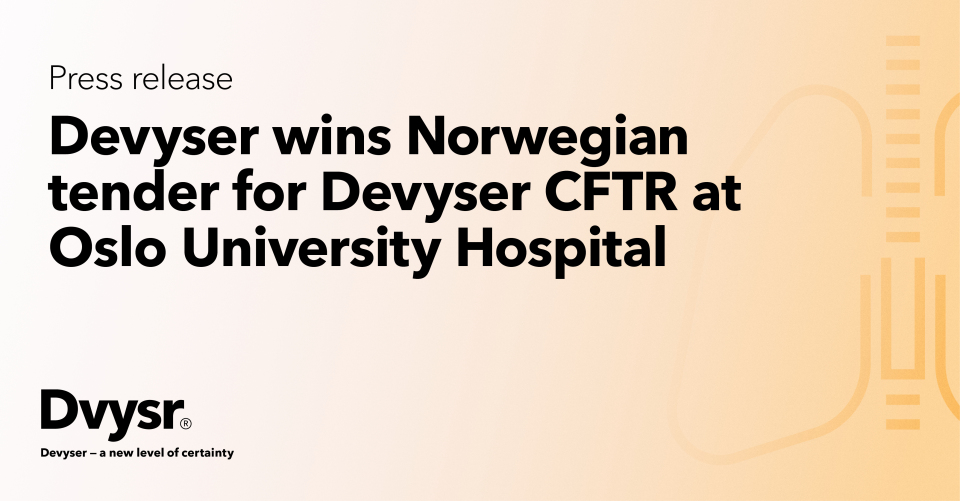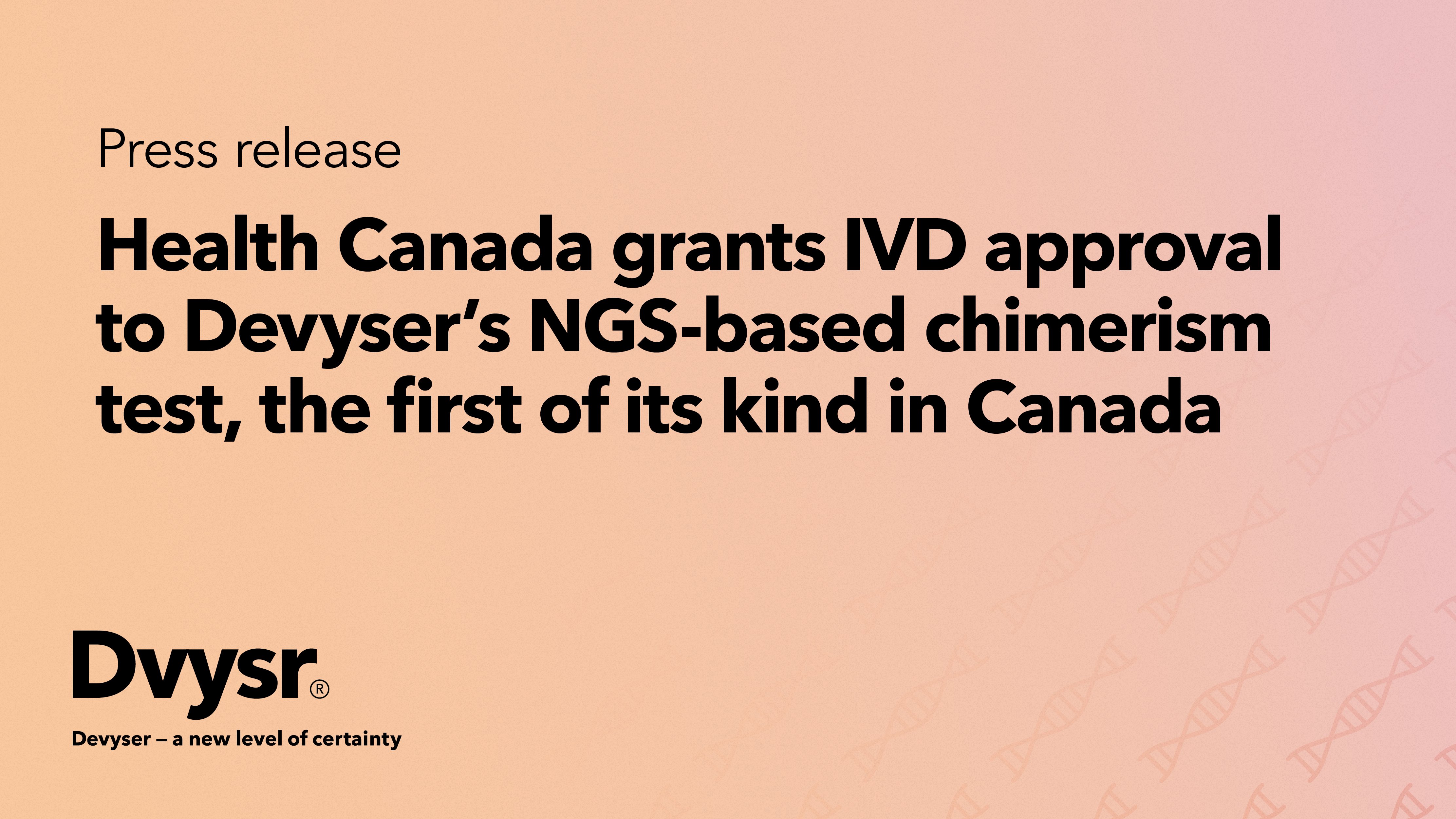Devyser wins Norwegian tender for Devyser CFTR at Oslo University Hospital
Devyser is proud to announce that the company has been awarded a tender by Oslo University Hospital...
Post-transplantation
.jpg)
Post-transplantation | July 3, 2023
A better patient care is the final objective for Dr. Helena Devos and the team at Sint Jan’s hospital in Bruges, Belgium when they switched from STR based chimerism test to Devyser´s NGS method for chimerism analysis. With its high sensitivity, the test enables earlier detection of graft failure and relapse. This makes it possible to intervene much earlier, which can prevent hematological relapse in some cases. Dr. Devos believes that the NGS method for chimerism analysis is an essential tool for hematologists to improve patient follow-up.
Read the full story below.
Dr. Helena Devos is a clinical biologist who has been using the NGS method for chimerism analysis for over two years now. The main reason why she and the team at AZ Sint Jan changed from the STR-based chimerism test to NGS was the high sensitivity.
Excellent sensitivity, accuracy, and precision
In her own validation study of the Devyser kit, Dr. Devos, together with molecular biologist Friedel Nollet, PhD, and bioinformatician Matthys Vynck, PhD, demonstrated an analytical sensitivity of about 0.1%, which is significantly better than the 5% sensitivity of the STR method. This work was published in Journal of Molecular Diagnostics.
“Thanks to the sensitivity we detected relapse much earlier, which improves patient care. The Devyser test proved to have very good accuracy and precision” says Dr. Devos.
Even though the team experienced the NGS method to be more labor intensive than the STR procedure, the Devyser setup is easier compared to qPCR chimerism analysis, The NGS test costs more but was implemented in routine diagnostics because the test brings much better patient follow-up and care of hematological patients.
The fact that the Devyser test will be IVDR certificated in the future is also a great advantage.
Earlier intervention and improved treatment
Dr. Devos uses chimerism monitoring to detect early graft failure, monitor engraftment, and detect early disease relapse. Chimerism analysis is performed every two to three months, and the results are reported to the hematologist. In case of slight increase of host chimerism above the biological threshold, Dr. Devos advises the hematologist to have a closer follow-up of the patient and repeat the test after four to six weeks. The sensitive chimerism test also gives more time to prepare a therapeutic treatment, e.g. by modulation of immunosuppressant drug treatment based on the chimerism level.
Micro chimerism and the importance of high sensitivity
Patients with an increased host chimerism post-transplant have an increased risk of future relapse of their leukemia. Micro chimerism is the status where host chimerism is present at 1% or lower.
In the clinical practice of AZ Sint Jan, micro chimerism which increases over time is in most cases an early sign of relapse. Using a very sensitive test like Devyser Chimerism NGS is vital to detect the presence of micro chimerism.
In case of increased chimerism, the hematologist is able to use early interventions such as immunosuppressive therapy or transfusion to convert mixed chimerism to complete chimerism and restore the graft versus leukemia effect.
“With early detection of relapse and early therapeutic intervention, many patients may be prevented from developing hematological relapse, which is a significant improvement in our patient care” Dr. Devos concludes.

Devyser is proud to announce that the company has been awarded a tender by Oslo University Hospital...
Read More

Devyser, a leading provider of advanced genetic testing solutions, has been awarded a new tender in...
Read More

Devyser is proud to announce that One Lambda Devyser Chimerism and Advyser Chimerism have been...
Read More

Devyser today announced that the Centers for Medicare & Medicaid Services (CMS) has issued its...
Read More